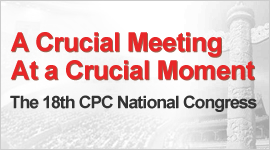Gloomy background to ASEM
- By Fraser Cameron
 0 Comment(s)
0 Comment(s) Print
Print E-mail China Daily, November 2, 2012
E-mail China Daily, November 2, 2012
Next week, European and Asian heads of state and government gather in Vientiane, Laos, for their biennial Asia-Europe Meeting (ASEM). The meeting takes place against a somber global outlook. The European economy is in poor shape, while Asian economies are also slowing down. Add in the troubles of the US economy and it makes a gloomy world picture.
Inevitably, ASEM will be dominated by the global economic situation. Leaders are exhorted to resist protectionism, ensure fiscal prudence and stimulate domestic demand.
European leaders will tell their Asian counterparts that the worst of the eurozone crisis is over. The decision of the European Central Bank to intervene in the sovereign debt crisis has removed fears of an imminent default by any government. There remain huge problems in Greece and Spain but the markets are no longer focusing on a "Grexit".
There were concerns by many Asian countries, especially China, that the European Union would press them to buy European government bonds and contribute to the safety net for the euro. But Europe understands that Asian governments will only buy debt when they are confident of the returns.
In these circumstances, one cannot expect too much from ASEM. The imminent changes in political leadership in several Asian countries will also affect the meeting. Just several days after the meeting a new leadership will be elected in China. There could be elections in Japan and the Republic of Korea before the end of the year. Elsewhere in Asia, governments are weak, as in India, and unable to enact reform programs.
This means that EU-Asia relations will be on a holding pattern for some time. ASEM is also not the venue to expect new initiatives. It is simply too big and only meets every two years. Smaller groupings such as the G20 now are more likely to guide the global economy.
Bilateral ties are also likely to increase in importance. On the sidelines of ASEM, leaders will hold dozens of bilateral meetings. European Council President Herman van Rompuy and European Commission President Jose Manuel Barroso will also visit Indonesia, East Timor, Vietnam, Thailand and Myanmar while in the region.
Meetings are of course not everything. Trade is a top priority and the EU is moving fast to negotiate new free trade agreements with Asian partners. The EU-ROK free trade agreement is to be followed by similar deals with Japan and India.
Despite the economic crisis the EU is still the main export market for most Asian countries. The EU is also the largest provider of development assistance for Asia.
One bilateral relationship, the one between the EU and China, however, stands out. In the face of the global economic situation, Brussels and Beijing recognize that they have to work together. With the EU as its largest export market and a sizeable chunk of its huge currency reserves in euros, China has a big stake in a prosperous European economy.
Since China joined the World Trade Organization in 2001, its trade with the EU has boomed. The EU has been China's top trading partner for most of the past decade, while China has been the EU's second trading partner during the same period. There has been a drop in trade volumes this year but in 2011 bilateral trade topped 500 billion euros, having more than quadrupled since 2003. That translates into a daily trade volume of over 1.25 billion euros.
The EU has become the largest investor in China while, over the last two years, Chinese investments in EU countries have surged as Chinese companies look for bargains in the troubled European economies.
Tourism is also booming with over 5 million people traveling between the two sides every year. The two sides have more than 400 twin cities.
At present, more than 230,000 Chinese students are studying in Europe, three times as many as in 2001. And there are over 60 dialogues between the two sides covering everything from aviation and customs to the environment and human rights.
So in terms of the sheer number of meetings, the EU-China relationship has developed fast in the past decade. But it is a less rosy picture when it comes to building trust and working together on international issues. The EU and China differ on Syria and how to deal with the Democratic People's Republic of Korea. Beijing is skeptical about the Western use of the principle and responsibility to protect, as was applied to Libya. There are continuing disputes over the arms embargo and the EU's refusal to grant China market economy status. The EU also complains about the lack of a level playing field, citing problems in market access and China's approach to intellectual property rights.
So the net result is a mixed balance sheet. There has been progress in many fields but overall the relationship has not fulfilled its potential.
It is to be hoped that the new Chinese leadership will continue and strengthen the efforts of Premier Wen Jiabao to forge closer EU-China ties as part of the overall EU-Asia relationship.
The author is director of the EU-Asia Centre.






